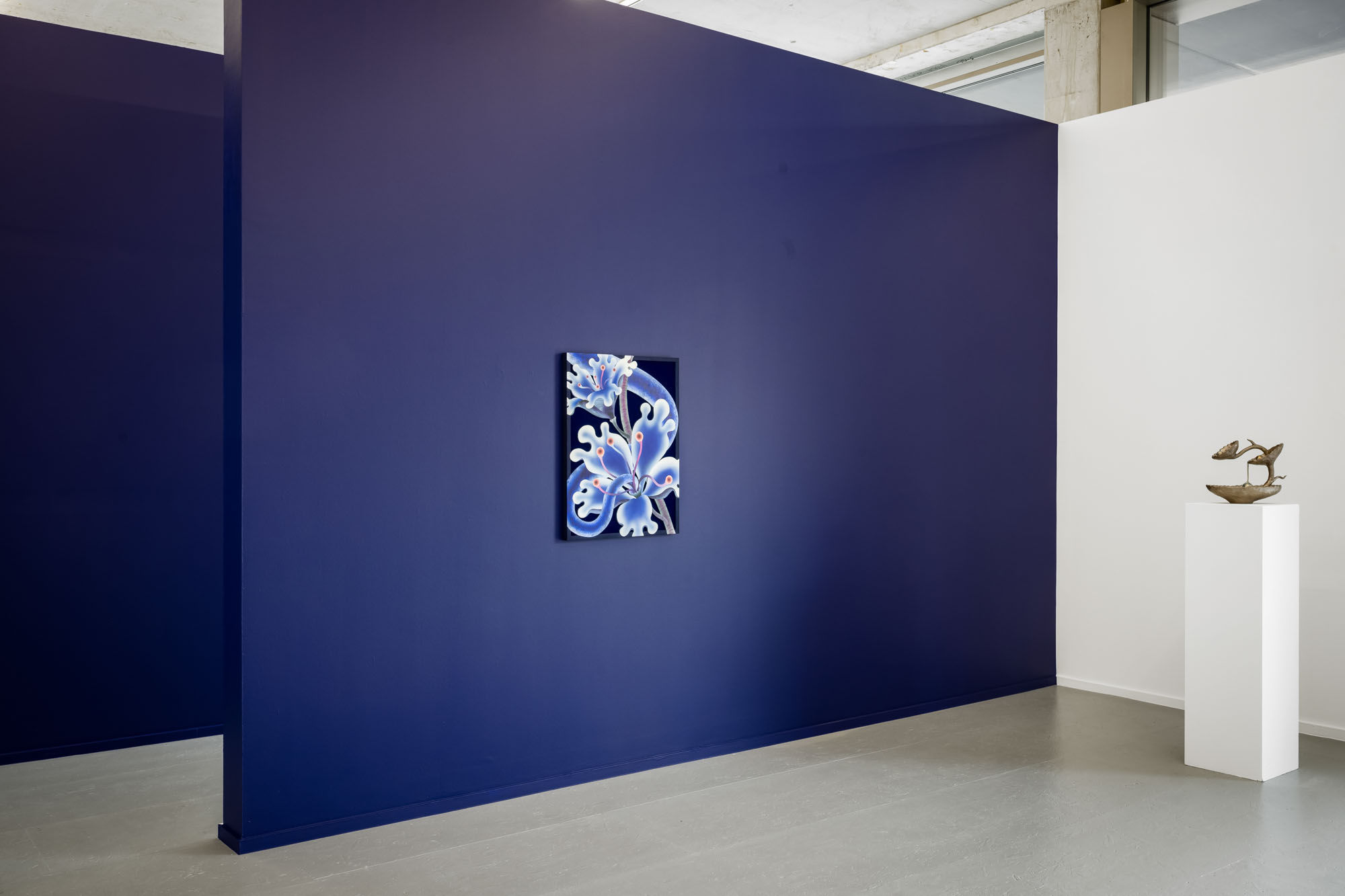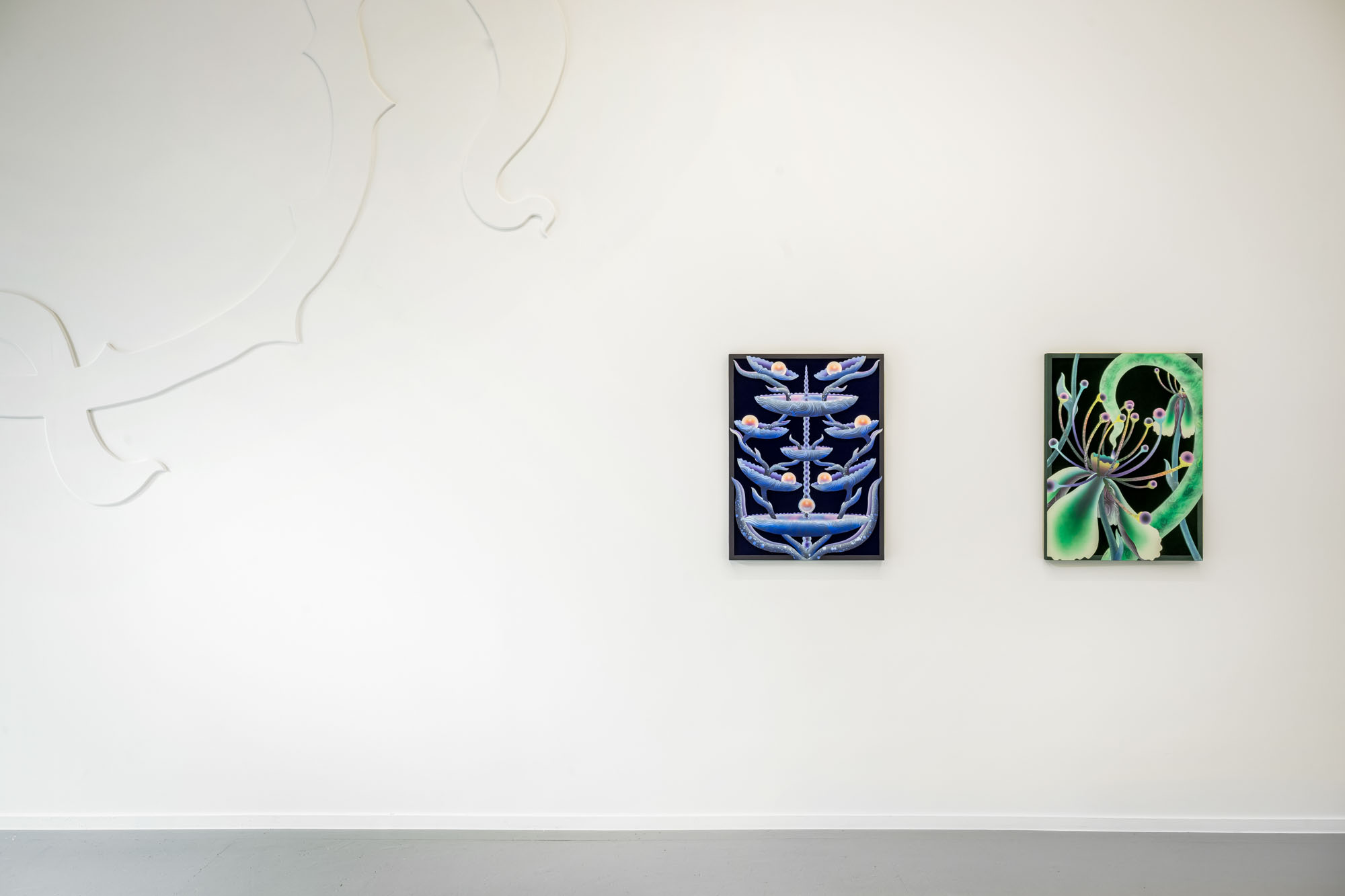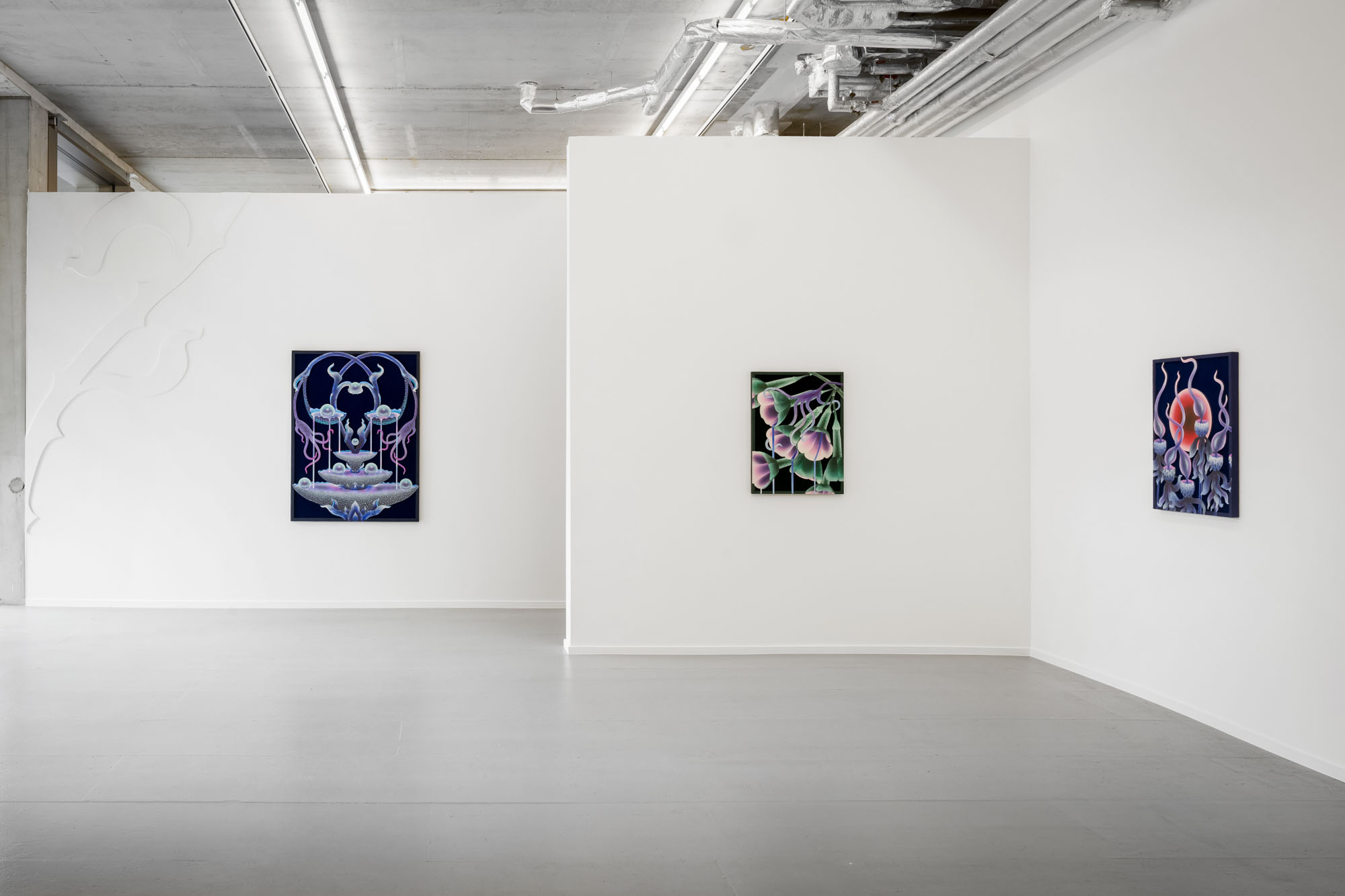Mevlana Lipp's artworks glow in the dark. The security of a nightlight, the neon dream of a rave party, the bioluminescent power of nature, the dawn of spiritual awakening, the phosphorescent rapture of a galaxy-far-far-away, afterimages stinging on the retina, the glow of comfort in dark times, the blast of overwhelming flashbulb memories, the blacklight of microscopic images, the smouldering magic lamp of One Thousand and One Nights and the burning blaze of a sun-drenched exotic island: all these glimpses of light are interwoven in the shimmering gardens of the artist. With the title Soleil, Lipp honours the sun as the only object in our solar system that produces its own light.
Though his gardens are bathing in glowing moonlight, the artist knows the wondrous illusion of reflection and the sobering disenchantment of biting the reflective dust. Lipp has overcome artistic challenges along the way. Finishing his studies at the Kunstakademie Düsseldorf, he entered the art world as a mixed media artist. Part of a duo, he created a world where sculptural installations fused with performance art and video. The artists often worked more than a year on the performances, sets and costumes of one science fiction like film. As a solo artist Lipp was left to search his authentic language. He intertwined his upbringing in the countryside, his fascination with biology, and his background as a sculptor. As a filmmaker storytelling was important for Lipp. In painting he finds exciting new opportunities to play with narrative and illusion. The fear and overwhelming anxiety he experienced during his artistic quest became part of the story. In his art kindness and panic engage in dialogue with each other. By adding painting, the monumental sculptures evolve from wall-objects to their current form as relief-like images. This self-developed technique keeps the artworks close to the material and three-dimensional and creates space for dramaturgy and sensitive motifs.
This uncompromised artistic form has, with the cutting and processing of wood, a technical side where Lipp can experience his sculptural talent in a flow. The compositions are at first very well thought through in drawings. Later, during the creation of artworks, the artist no longer must think but act. The head now leaves it to the hands. He describes it as: “a controlled way to catch the subconscious”. This traditional element in combination with the botanical motifs evoke references to movements such as Arts & Crafts, Jugendstil and Art Nouveau. They share a love for nature, the ornamental and skill. The gracefully stylized plants and flowers express emotions through their lush lines. Salvador Dali (1904 – 1989) described the splendour and opulence of Art Nouveau as: “terrifying and edible beauty”1. It could just as well have been a description of Soleil.
Lipp's saturated colour palette does not reveal that he abandoned the black and white pattern just a few years ago. Black and white are not colours, they are nuances of infinite combinations. It often turns out that artists who limit themselves to these shades for a long time eventually develop an immense sense of colour. The perception of gradation, subtlety and capturing light is unparalleled. Artists who work in black and white think in light. Because Lipp's artworks are also still sculptures, the basis of creating contrast and space is not entirely simulated. Their structure is enhanced with an overwhelming illusion and freedom through the careful addition of transparent layers of paint. In the end, the textures of the velvet background and tactile natural elements such as sand, allows everything to merge into a magical whole.
'I hate flowers', proclaimed Georgia O'Keeffe (1887-1986). This American artist is, however, somewhat the painterly definition of the motif. The magnified succulent details of petals, stems and buds oblige us, as with Lipp, to reflect on the wonders of nature. The abstracted forms and contours are by both a world free of people. The voids of colour create a sense of infinity and timelessness. O'Keeffe deliberately chose isolation: "I wish people were all trees and I think I could enjoy them then". Lipp uses the same motif, but from the peace and tranquillity of the deserted night gardens he yearns for connection. The biomorphic forms evoke living beings and Freudian erotic references. While Lipp embraces this personal reference to fertility and new life with fountains of virility, it left O'Keeffe with a hate of flowers. It's not about the safe, fussy flowers, but about the desire for a simple place, without the complications of the thinking mind. The metaphysical experience as a natural link in the biological complexity of our ecosystem. A mystery that can perhaps be understood by trying to shape fragments and thus become part of the inexplicable, big world. The proliferation and overflow of botanical motifs also carries a contemporary message of ecological threat and the symbolism of the danger of real touch and intimacy. "I've been absolutely terrified every moment of my life and I've never let it keep me from a single thing that I wanted to do," said O'Keeffe.
For Lipp, the ignition point is emotional. The exotic vegetation of Henri Rousseau's (1844-1910) unrestrained, surrealistic dream world leaves room for melancholy and sadness and is closer to Lipp in terms of content. In search of a paradise, a tropical getaway, to be free from fear and the burden of the rat race, they create naive scenes with loaded meaning. It is a subjective and personal perspective of reality. It's more about experiencing than seeing. “It is often said that my heart is too open for my own good,” Rousseau noted. The direct style makes space for intuition and connection with the basic emotions. And to search even further, like Hilma af Klint (1862-1944), for a higher energy, a life force beyond the visible world, to be found in the deepest forms of nature and its patterns and structures.
Lipp's artwork is unapologetically beautiful. The aesthetic is deep, not superficial. Through a perfect balance of feeling and reason, and intuition and technicality, he achieves a transformative power in his work. With the democracy of beauty Lipp honours the primary part in each of us. The part that can connect without words and thoughts. They are often the root of much suffering. These artworks threaten and admire, celebrate, and warn, provoke existential fear and vitality, are carrot-and-stick. The confrontation seems light as a feather but leaves bruises in the end.
Femke Vandenbosch
May 2023


